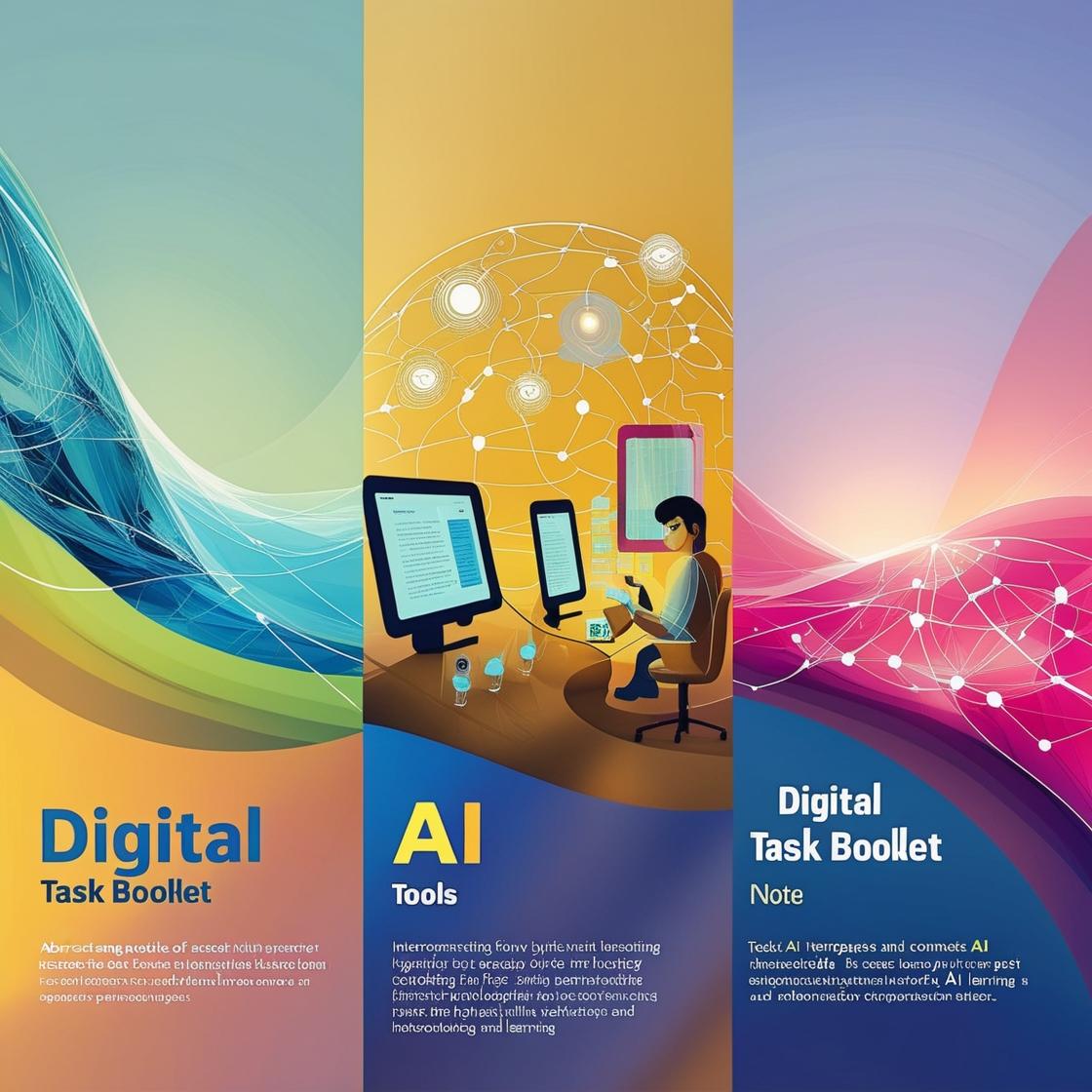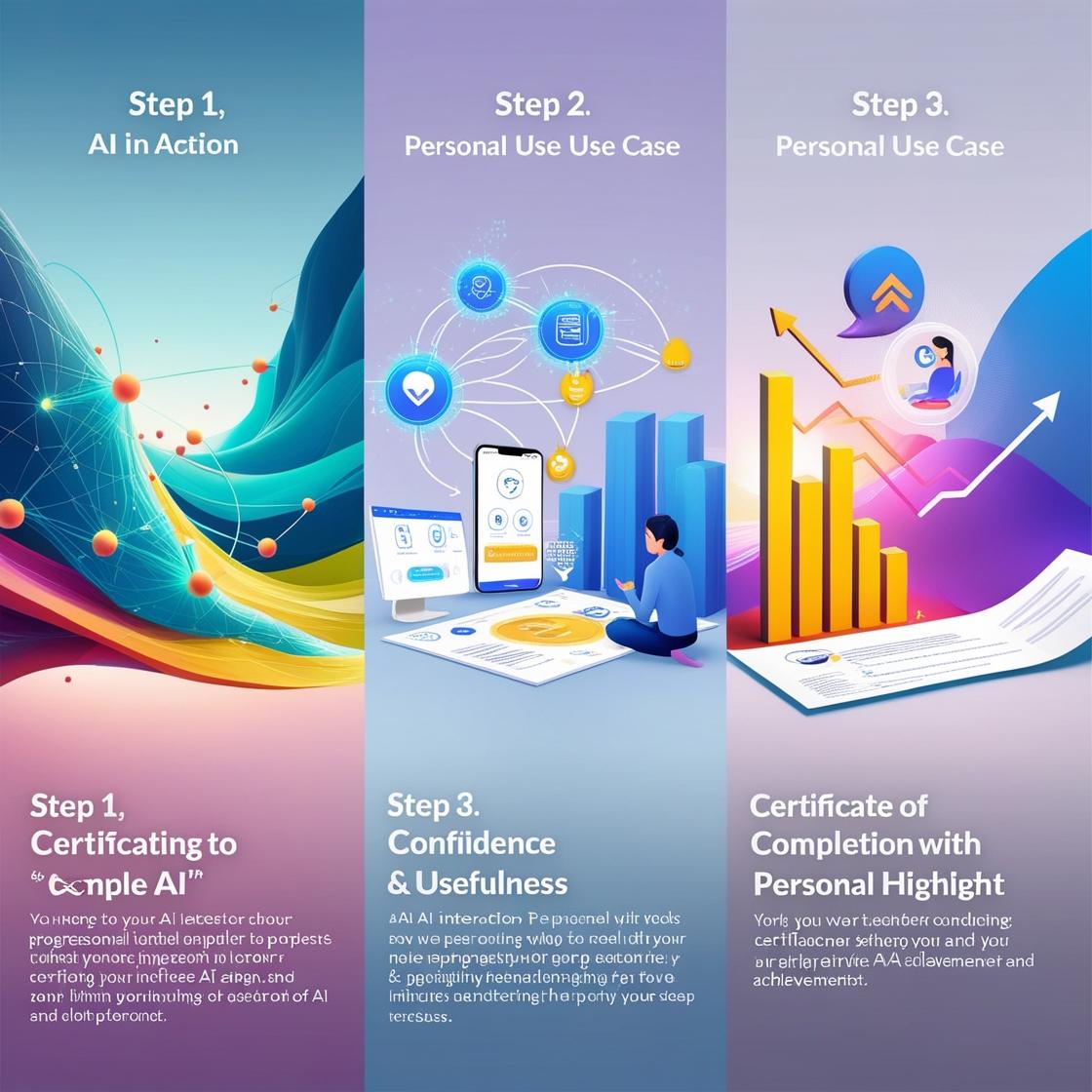Assessment Strategies: Measuring Progress with Confidence
This section outlines flexible and learner-friendly assessment methods designed specifically for adult learners exploring AI. The focus is on real-life application, personal reflection, and positive reinforcement. Through practical tasks, peer sharing, self-assessment, and trainer feedback, learners are encouraged to build confidence, recognize their progress, and continue using AI tools beyond the course. These strategies are supportive, hands-on, and adaptable to various teaching settings.

Example 1
Real-Life Tasks and Reflective Assessment
Step 1: Final Task Booklet – Practical Application
Each participant receives a short, printed (or digital) task booklet with 3–5 everyday situations that involve using AI tools covered in the course. Tasks are designed to match real-life contexts.
Examples of tasks:
- Set a voice reminder: “Remind me to call my doctor tomorrow at 9 AM.”
- Use a translation app to translate a sentence from a restaurant menu
- Ask ChatGPT (or another AI tool) to help you write a short birthday message
- Create a shopping list using an AI note-taking or voice assistant app
- Use an AI calendar tool to schedule an appointment
Participants complete the tasks individually, using their own device or a course-provided device. Trainers assist only if necessary.
Step 2: Show and Explain – Peer Presentation
Each learner chooses one task from the booklet they feel confident about and shows it to a partner or small group.
They explain:
- What tool they used
- How they completed the task
- When they might use this tool in real life
This part is oral, informal, and supportive. It assesses both skill and understanding in a relaxed setting.
Step 3: My AI Toolbox – Self-Assessment and Reflection
Each learner fills in a personal reflection sheet listing:
- 3 AI tools they tried
- What they can do with each one
- How useful or easy they found them (smiley faces or color codes)
- One AI tool they want to keep using after the course
This serves both as a self-assessment and a motivational tool to encourage post-course use.
Step 4: Trainer Feedback and Encouragement
The trainer reviews each participant’s task booklet and toolbox sheet, then gives brief individual feedback, either written or in person.
This focuses on:
- What the learner did well
- One suggestion for continuing to use AI confidently
- A positive message of encouragement
Example 2
Simulation-Based Assessment and Personal Progress
Step 1: AI in Action Simulation Stations
Set up 3–4 practical stations, each simulating a common daily or work situation where learners can apply what they’ve learned. Each station focuses on one AI tool or feature.
Examples stations:
- Voice Assistant Station – Task: “Set a reminder for your next medical appointment”
- Translation Station – Task: “Translate a greeting card message into another language.”
- Writing Assistant Station – Task: “Use AI to help write a short, polite email reply.”
- Calendar Station – Task: “Use an AI calendar app to create an event and share it.”
Learners rotate through each station, completing tasks at their own pace. Trainers observe and offer support only if learners get stuck.
Step 2: Personal Use Case Task
Each learner is invited to choose one everyday task they personally find useful (e.g., preparing a shopping list, planning a trip, replying to a message with AI).
They then:
- Choose the most appropriate AI tool from those learned in class
- Perform the task on their own device or a class device
- Take a screenshot or explain the result to the trainer
This assesses both autonomy and real-world application.
Step 3: Confidence & Usefulness Voting Wall
Create a physical or digital board with the tools used in the course (e.g., Google Assistant, ChatGPT, Google Translate, etc.).
Each learner places coloured stickers or icons to indicate:
- I feel confident using this
- I can use this with a little help
- I still find this confusing
- I plan to use this after the course
This gives both feedback to the trainer and a sense of learner ownership.
Step 4: Certificate of Completion with Personal Highlight
Each participant receives a simple certificate, not only for attendance but also highlighting a personal achievement.
For example:
- Successfully used voice assistant for reminders
- Wrote a full email using an AI writing tool
- Completed a full simulation task with no help
This ends the course on a positive, confidence-boosting note.


